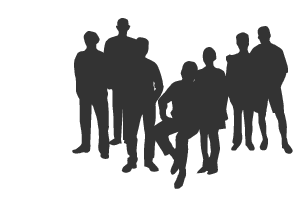Functions of Human Resource Department
The Human Resources Management (HRM) function includes a variety of activities, and key among them is deciding what staffing needs you have and whether to use independent contractors or hire employees to fill these needs, recruiting and training the best employees, ensuring they are high performers, dealing with performance issues, and ensuring your personnel and management practices conform to various regulations. Activities also include managing your approach to employee benefits and compensation, employee records and personnel policies.
Usually small businesses (for-profit or nonprofit) have to carry out these activities themselves because they can't yet afford part- or full-time help. However, they should always ensure that employees have -- and are aware of -- personnel policies which conform to current regulations. These policies are often in the form of employee manuals, which all employees have.
Manpower Planning
It involves the planning for the future and finding out how many employees will be needed in the future by the business and what types of skills should they possess.

It depends on the following factors
- The number of people leaving the job
- The projected growth in sales of the business
- Technological changes
- Productivity level of the workers
Recruitment and Selection Process
The recruitment Process starts with a vacancy arising.

Job analysis and description
Once a vacancy arises the human resource manager will first identify and record the responsibilities and tasks which are related to the job. After analysing the responsibilities and tasks they are noted down which becomes the Job description for the job. It includes:
- A job title
- Department of the business in which the new employee would work
- Details of the tasks to be performed
- Responsibilities involved
- Place in the hierarchical structure
- Methods of assessing the performance
Job Specification
On the basis of Job description, a job specification is made. It is a document which outlines the requirements, qualifications and qualities, skills and knowledge required for the job. It is also known as person specification.
Job Advertisement
After completing the person specification (job specification) the vacancy is advertised. It can be advertised internally (on the company notice board or newsletter) or may be advertised externally in a newspaper or magazine. The advertisement will usually contain the elements of a person specification with additional information like the name and profile of the company, date and time of interview, address of the company and the contact person etc.
Applications received and shortlisted
Once a job is advertised, there might be hundreds of application received. All of the applications received might not be suitable for the job. Thus a short listing of the applications will be done. The applications most near to the job specification will be called for interview and those who do not qualify the criteria will be rejected.
Interview
The shortlisted candidates will be called for an interview to verify their qualifications, personal qualities and aptitude for the job. It may involve a face to face discussion between the interviewer and interviewee. The firm may also conduct skill test, aptitude tests or personality test if it deems fit so.
Selecting the suitable candidate
The candidate who scores the maximum in the interview will be selected for the job and given an appointment letter.
What is training?
Training involves improving the skills, knowledge and attitudes of employees so as to become more efficient and productive.
Objectives of Training
- Improve the efficiency of workforce
- Make workers multi-skilled and flexible
- Introducing a new process or new machinery
- Reduce wastage of material and time
- Adapt to change
Types of Training
Induction Training
It involves introducing a new employee to its work environment. Usually, it includes
- introduction to colleagues,
- explaining the firm’s activities,
- procedures followed in the organisation,
- explaining the organisational structure,
- place of working etc.
On the Job training
A worker gets training by watching a more experienced worker doing the job. It is common for unskilled and semi-skilled jobs. Thus the worker gets trained while he is performing his regular duties.
Off the job training
This is when a worker goes away from the place of work to attend a special course. The training can be in the form of a seminar,workshop or a college course. Off the job training is usually conducted for managerial level employees.
What is Dismissal?
Dismissal means when a worker is told to leave the job because of his behaviour is unsatisfactory or he has repeatedly failed to carry out his duties.
What is meant by Redundancy?
Redundancy happens when a person is told to leave the job because his skills are of no more use to the organisation. This may happen due to many reason, for example,
- A merger between two firms results in surplus job.
- A business is losing sales and wants to cut the production level or cost and may lay off employees
- The product is taken out of production altogether
- Maybe new machinery is introduced and it requires different skills and qualifications to operate it.
It is also known as retrenchment.





